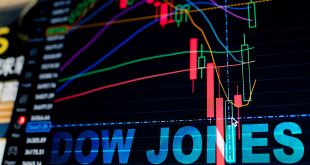Nonfarm Payrolls relatively disappointed prior estimates, but the labor market indicators were stronger than expected. The employment data has had a modest impact on the forex market. In the light of the NFP data, the US Fed is very determined to move out of easing policy settings.
Economic Data
Nonfarm Payrolls (NFP) rose by 199000 in December versus forecast for a 400K rise (some newswires had reported the median forecast at 447K), data published by the US Bureau of Labor Statistics showed on Friday.
That meant the pace of job gains was roughly in line with November, when 249K jobs (revised up from 210K) were added to the US economy.
The Canadian economy added 54.700 jobs in the month of December, above expectations for a 27.500 gain, though still a marked deceleration from the 153.700 jobs added in November, according to the latest release from Statistics Canada released on Friday. Canada saw 122.500 new jobs in full-time employment, whilst part-time employment fell 67.700. The unemployment rate fell to 5.9% from 6.0% in November, below expectations for it to remain unchanged.
US energy companies kicked off the new year by continuing to add oil and natural gas rigs this week after increasing the rig count in 2021 after two years of declines. The oil and gas rig count, an early indicator of future output, rose two to 588 in the week to Jan. 7, its highest since April 2020, energy services firm Baker Hughes Co said in its closely followed report on Friday.
Even though the rig count has been rising for a record 17 months in a row, analysts noted production was still expected to ease in 2021 as some energy firms continue to focus more on returning money to investors rather than boosting output. The total rig count was up 228 rigs, or 63%, over this time last year. US oil rigs rose one to 481 this week, their highest since April 2020, while gas rigs rose one to 107, their highest since March 2020.
Other Developments
Nonfarm Payrolls relatively disappointed prior estimates, but the labor market indicators were stronger than expected. The employment data has had a modest impact on the forex market. In the light of the NFP data, the US Fed is very determined to move out of easing policy settings.
The disappointment in payrolls will not undermine the USD. The Fed is on a mission to move into restrictive policy; taper is almost over, lift-off is happening, inflation is very high with evidence of second round price pressures. Despite the back-up in yields this week, financial conditions remain accommodative especially relative to the growth and inflation backdrop.
Economists do not rely much on Omicron news to sway sentiment in risk or forex, and consequently, Fed’s determination keep the USD in strong form.
The USD/JPY is the best expression of Fed policy, given it is just a mirror image of the Fed funds futures. Market observers remain biased to USD/JPY topside with an eye to 118/19 in the coming weeks and months, as further acknowledgement of QT should reinforce duration supply and higher 10 year real yields.
Gold has been swinging either side of the $1790 level in recent trade in wake of the latest jobs report. XAU/USD is being shielded from higher yields by the weaker US dollar, and if this reverses, gold will be in trouble. The XAU/USD Index hit lows around $1782 and high around $1796 and is currently trading towards the upper end of this intra-day range around $1794.
At current levels in the $78.75 region, WTI is still on course to post a weekly gain of around $3.50, which would mark a third successive week in the green. Order appears to have been restored in the capital city of Kazakhstan, with the President declaring constitutional order restored after Russia sent paratroopers to help the government quell widespread protests which had turned into an uprising.
Also Read:

 Noor Trends News, Technical Analysis, Educational Tools and Recommendations
Noor Trends News, Technical Analysis, Educational Tools and Recommendations




